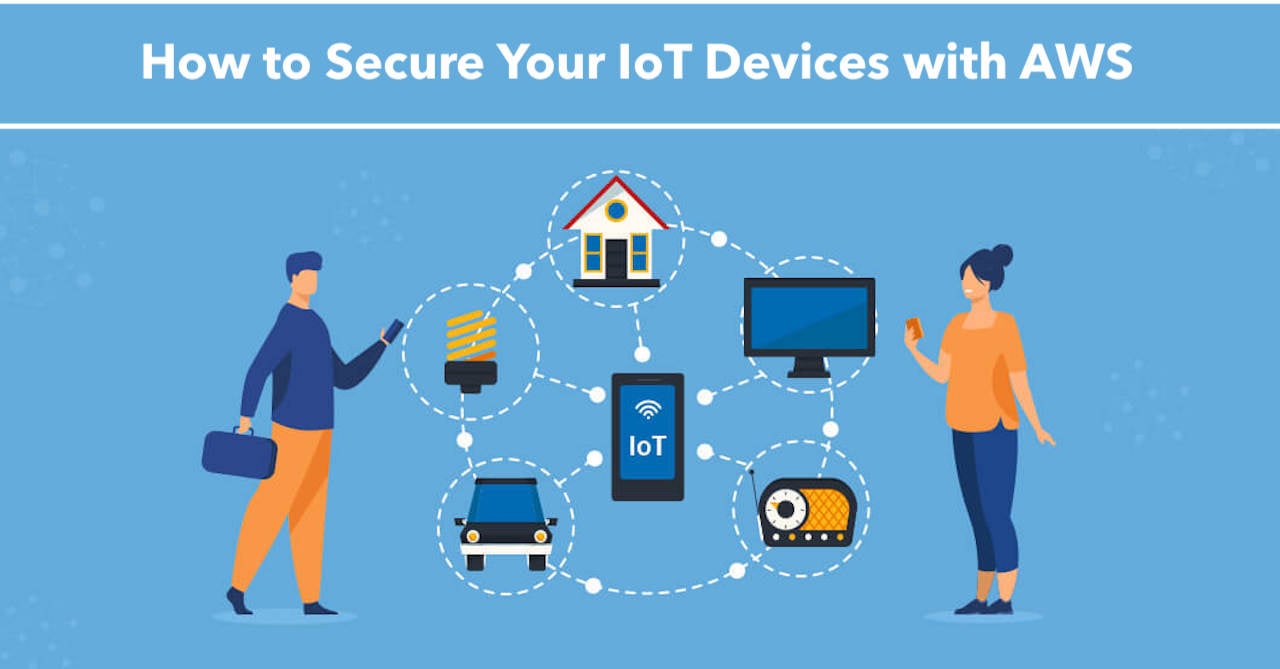The Internet of Things (IoT) is growing by leaps and bounds. Gartner estimates that there will be over 27 billion IoT devices by 2025. With this many devices connecting to the internet, it’s important to take steps to secure them. This blog post will cover five ways to secure your IoT devices with AWS. IoT devices are often low-powered and have limited computing resources. This can make deploying traditional security measures like firewalls and intrusion detection systems difficult. In addition, many IoT devices are deployed in remote or hard-to-reach locations. This makes it difficult to secure them physically, and you can do so with the right iot device management platform.
AWS provides several services that can be used to secure IoT devices. These include Amazon Virtual Private Cloud (VPC), Amazon Identity and Access Management (IAM), and AWS IoT Core.
How to Secure Your IoT Devices with AWS
Amazon Virtual Private Cloud (VPC) provides isolated networking for your AWS resources. You can use VPCs to segment your IoT devices from other resources in your AWS account. This makes it easier to control access to your IoT devices and limits the spread of malware.
Amazon Identity and Access Management (IAM) is a web-based service that you can use to manage users and permissions for your AWS account. It can be used to control who has access to your IoT devices and what actions they can perform. For example, you could create an IAM user for each person who needs access to your IoT devices. You could then grant that user permission to only view data from the devices.
Advertisement
Content in this Article
AWS IoT Core is a managed cloud service that lets you connect, monitor, and manage IoT devices at scale. With AWS IoT Core, you can centrally manage all your IoT devices in one place. AWS IoT Core makes it easy to provision and manage certificates for your devices. It also provides built-in security features like device authentication and authorization.
Monitoring and logging activity from your IoT devices is essential for security. By monitoring activity, you can detect suspicious behavior and take action to protect your resources. AWS CloudTrail is a service that enables you to log, monitor, and analyze activity from your AWS account. CloudTrail can track changes made to your IoT devices and their configurations.
The risks associated with IoT devices and how to mitigate them
IoT devices are becoming increasingly popular as more and more businesses adopt them for various tasks. However, these devices come with many risks that must be mitigated to keep your data safe. Here are some of the risks associated with IoT devices and how you can mitigate them:
- Unsecured communications: One of the biggest risks associated with IoT devices is that they often communicate using unsecured protocols such as Bluetooth or Wi-Fi. This means that it is relatively easy for someone to intercept the communication between the device and its server. It would help to prioritize that all communications between your IoT devices and their servers are encrypted.
- Lack of updates: Another risk associated with IoT devices is that they often do not receive updates promptly. This can leave them vulnerable to attacks that exploit known vulnerabilities. You should ensure that your IoT devices are always up-to-date with the latest security patches to mitigate this risk.
- Insufficient security: One of the most common problems with IoT devices is that they often have inadequate security measures in place. This can make it easy for attackers to gain access to your data or even take control of the device itself. To mitigate this risk, you should make sure that your IoT devices are properly secured before deploying them.
Setting up AWS Identity and Access Management (IAM) for your IoT devices
AWS Identity and Access Management (IAM) is a powerful tool that you can use to manage access to your AWS resources. IAM can be used to control who has access to your IoT devices and what they can do with them. To set up IAM for your IoT devices, you will need to create a new IAM user for each device.
To do this, log in to the AWS Management Console and navigate to the IAM section. Then, click on the “Users” tab and click on the “Create User” button. Enter a name for the user and select the “Programmatic access” checkbox. This will allow the user to access your IoT devices using an API key.
Next, you will need to create a new group for your IoT devices. To do this, click on the “Groups” tab and click on the “Create Group” button. Enter a name for the group and select the “IoT Devices” checkbox. This will allow users in this group to access your IoT devices.
Finally, you will need to add the new IAM user to the group. To do this, click on the “Users” tab and select the user you just created. Then, click on the “Add User to Group” button and select the group that you just created.
Now that you have set up IAM for your IoT devices, you can start creating Amazon Virtual Private Clouds (VPCs) for them.
Creating an Amazon Virtual Private Cloud (VPC) for your IoT devices
An Amazon Virtual Private Cloud (VPC) is a private network that you can create in the AWS cloud. VPCs allow you to isolate your IoT devices from the public internet and protect them from malicious actors. To create a VPC for your IoT devices, you must first log in to the AWS Management Console and navigate to the VPC section.
Next, click on the “Your VPCs” link and click on the “Create VPC” button. Enter a name for your VPC and select the “IoT Device” template. This will create a basic VPC that you can use for your IoT devices.
You can start connecting them to AWS now that you have created a VPC for your IoT devices.

